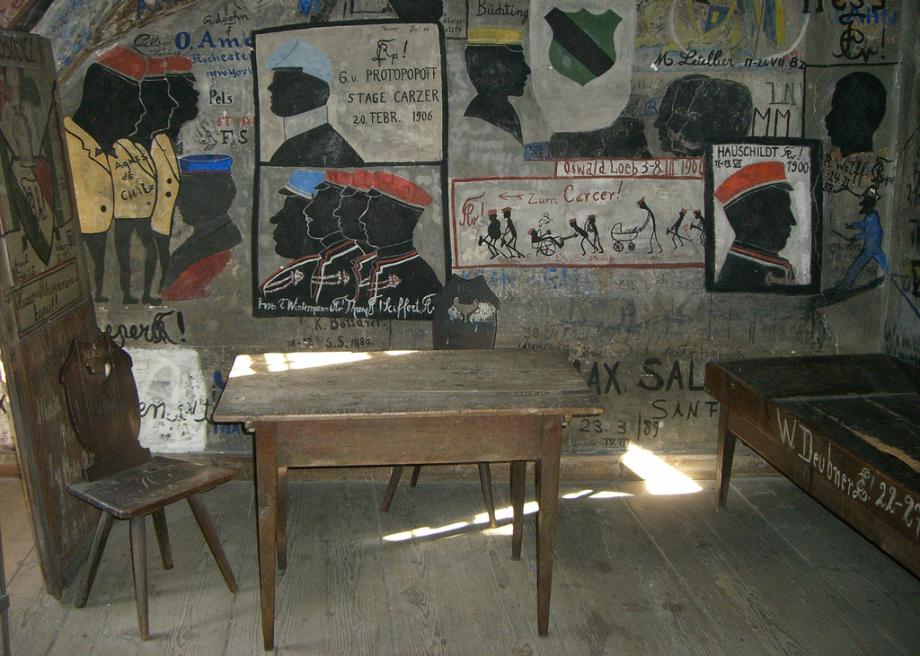But for all the ghastly atrocities, and the attitudes ranging from active malice to paternalistic bigotry which committed them, there are some stirring tales too. One of the most delightful is told in this exceptionally lovely book, Jon Sensbach's Rebecca's Revival.

That terrific picture on the cover tells half the story itself. It is a painting of a woman born with the name Shelly, who took the name Rebecca for herself, later adding her husbands' surnames. She was born on Antigua, probably as a slave, in about 1718; then kidnapped or sold to the Danish Caribbean island of St. Thomas, aged six or seven; kept as a house-slave by a Dutch family, who allowed her to be educated and baptised, and eventually freed her in her early teens. She became a linchpin of the Moravian mission to St Thomas ('everything depends on her', one of the missionaries wrote), married one of the missionaries, was imprisoned and nearly sold back into slavery. In the end, however, she went to Europe, remarried, and then spent many years running a mission school in West Africa. The painting is part of a family portrait from the 1740s. It is the face of a woman who has seen both hell and heaven; that smile is not meant lightly.
Incidentally, she also appears to be the first black African and perhaps also the first woman to be ordained in a Protestant church (she was made a Moravian deaconess in 1746, which entitled her to lay on hands to admit new members, and to preach to other women).
It's a great book, written for a mass readership but scholarly, and I'd recommend it to anyone at a loss for a Christmas present. It does, though, come up against one of the persistent problems to do with Christianity and slavery. It is not so much that the Bible treats slavery as a fact of life, rather than an evil to be opposed - slavery was a fact of life in the premodern world. Rather, the Gospel ethic of non-resistance - turn the other cheek, go the extra mile - is strained to its limits by slavery, in which the moral authority of nonviolence is completely swallowed up by the slaveholders' expectations. Frederick Douglass, the escaped slave who became one of nineteenth century America's most powerful antislavery activists, described how he once fought back against his master; how he, astonishingly, escaped being killed for it; and how he then vowed never meekly to submit to punishment again. It was part of his own, complex alienation from Christianity; and who will say he was wrong?
But there is non-resistance and non-resistance. Sensbach's book mentions the case of a Moravian convert on St Thomas named Abraham, a slave, who became one of the leaders of the church on the island. During one of the planters' campaigns of intimidation against the Moravians, Abraham was attacked on the road one night, bound, and viciously beaten before being dumped at their church. Later, he carefully sent the ropes back to his attackers: along with a note apologising for the fact that they were a little torn and damaged.
UPDATE: Not quite the first ordained black African Protestant. The much more ambiguous, but equally interesting, Johannes Capitein beat her by four years. He was ordained in the Dutch Reformed church in 1742, the same year he published a book arguing for the legitimacy of slavery. His avowed reason was that, unless slaveholders were persuaded that missionaries were not a threat, they would never allow the Gospel to be preached to their chattels.
UPDATE: Not quite the first ordained black African Protestant. The much more ambiguous, but equally interesting, Johannes Capitein beat her by four years. He was ordained in the Dutch Reformed church in 1742, the same year he published a book arguing for the legitimacy of slavery. His avowed reason was that, unless slaveholders were persuaded that missionaries were not a threat, they would never allow the Gospel to be preached to their chattels.
